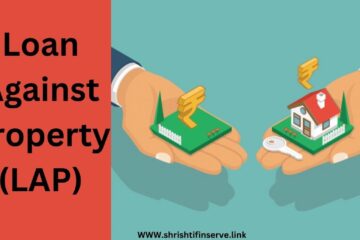A home loan (also called a mortgage) is a financial product that allows individuals to borrow money from a lender (typically a bank or financial institution) to purchase, build, or renovate a home. The loan is repaid over time, with interest, and the property typically serves as collateral, meaning the lender can seize the property if the borrower defaults. Lets Know More about how to get home loan hassel free.
Here’s a breakdown of key aspects of home loans:
1. Types of Home Loans

Fixed-rate mortgage: The interest rate stays the same throughout the loan term, providing predictable monthly payments.
Adjustable-rate mortgage (ARM): The interest rate changes periodically, typically after an initial fixed-rate period. Payments may fluctuate based on interest rate movements.
Interest-only loan: For a set period, only interest payments are required, with the principal repaid later, resulting in lower initial payments.
FHA loans: Insured by the Federal Housing Administration (in the U.S.), these loans are available to borrowers with lower credit scores or smaller down payments.
VA loans: Available to veterans, service members, and their families, these are backed by the U.S. Department of Veterans Affairs and often don’t require a down payment.
Construction loans: Used to finance the construction of a home, and typically transition into a traditional mortgage once construction is complete.
Home equity loans and HELOCs: Loans based on the equity of an already owned home, often used for renovations or other major expenses.
2. Key Components of a Home Loan
Principal: The amount of money borrowed.
Interest: The cost of borrowing the money, typically expressed as an annual percentage rate (APR).
Term: The length of time to repay the loan, often 15 or 30 years.
Down Payment: The initial payment made when purchasing a home, usually a percentage of the purchase price. A larger down payment can reduce the loan amount.
Amortization: The process of gradually repaying the loan over time through regular payments that include both interest and principal.

3. Home Loan Process
Pre-approval: Before house hunting, borrowers can get pre-approved for a loan by providing financial information to a lender, who will then estimate how much the borrower can afford.
Application: Borrowers submit a formal loan application along with documentation such as income statements, tax returns, credit history, and bank statements.
Approval: The lender assesses the application and, if approved, offers terms such as interest rate and loan amount.
Closing: After the loan is approved, the buyer and seller sign the necessary documents, the buyer makes the down payment, and the lender releases funds to complete the purchase.
Repayment: The borrower repays the loan in monthly installments, typically consisting of both principal and interest.
4. Interest Rates
Fixed vs. Variable Rates: Fixed-rate loans provide stability, while adjustable-rate loans may offer lower initial rates but can change based on market conditions.
Factors Affecting Rates: Credit score, loan amount, down payment, and economic conditions can all influence interest rates.
5. Costs Involved
Closing costs: These include fees for processing the loan, such as appraisal fees, title insurance, and legal fees. They are typically 2-5% of the home’s purchase price.
Private Mortgage Insurance (PMI): If the borrower puts down less than 20%, lenders often require PMI to protect the lender if the borrower defaults. you also know more about Loans Against Property.
6. Advantages of Home Loans
Leverage: Allows buyers to purchase a home without having the full purchase price upfront.
Homeownership: Provides a path to owning property, which can appreciate in value over time.
Tax Deductions: In some countries, homeowners can deduct mortgage interest from their taxable income.
7. Risks and Considerations
Foreclosure: If a borrower defaults, the lender can take possession of the home.
Interest Rate Risk: Adjustable-rate mortgages can lead to higher payments if interest rates rise.
Long-term Commitment: A home loan typically lasts many years, and market conditions or personal circumstances can change during this time.
Improve your credit score: A higher credit score can lead to better interest rates and loan terms.
8. Tips for Getting a Home Loan
Save for a larger down payment: Putting down more can reduce your monthly payments and help you avoid PMI.
Shop around for lenders: Compare different lenders to find the best rates and terms.
Understand the terms: Understand the interest rate, fees, and payment schedule completely before committing to a loan.
Do you want to explore specific details, like interest rate trends or types of home loans in your area?

Conclusion:
Now we know about how to get home loan Hassel free every steps with guidance



0 Comments